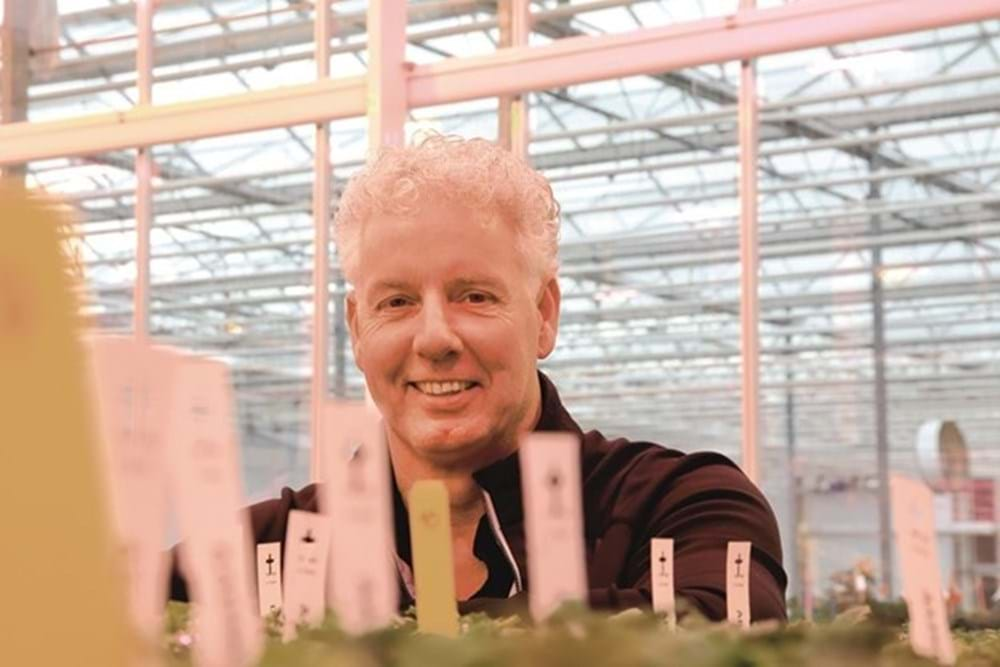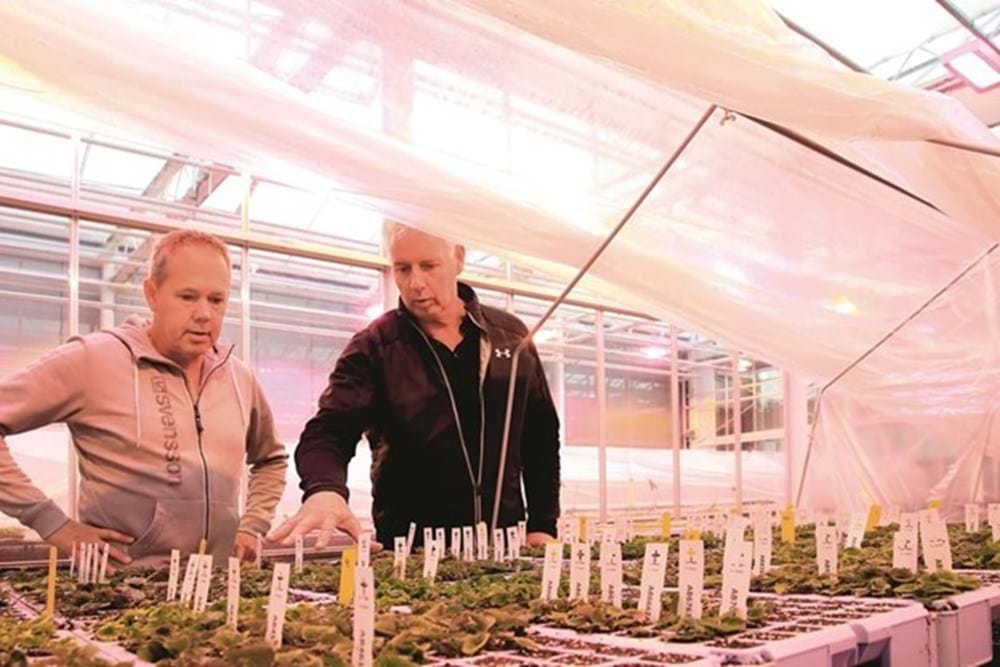At PanAmerican Seed, one simple question comes first: which innovative products can we develop to make your company more successful? The answer to that question is to listen carefully to the customer's current and future wishes. In order to respond optimally to this, the company invested in modern new greenhouse departments and the PARperfect screen solution from Svensson was chosen.
PanAmerican Seed is an international breeder and producer of seed-grown flowers and vegetables with thirty locations around the world. About thirty crops are bred at the breeding company in Venhuizen: annual and biennial perennials, cut flowers and potted plants. With the new building, the number of greenhouse departments has been expanded from ten to eighteen and a new business space and office building have been created. “We want to be a modern company; not only for our customers, but also for our staff. This includes all facilities that make it possible to grow even more sustainably, efficiently and innovatively,” says Tim Bouwman, Greenhouse Operations Manager at PanAmerican Seed.
The breeding company worked with close partners for the new building. As far as the screens are concerned, the choice was made to install Svensson's PARperfect screen solution, according to Bouwman. “We want to give the crop an optimal climate at the lowest possible energy costs. In combination with the new climate computer, we try to optimize the climate: for the newly sown seed in the plug phase, the crop that grows and blooms in the cultivation phase and the final crop during the finishing and harvesting phase. That requires all different light levels.”

High-quality light distribution
With the PARperfect screens, an optimal light level can be achieved all year round, explains Bart Bakker from Svensson. The Harmony 2047 FR and Harmony 7247 FR screens were chosen for PanAmerican Seed. “The common feature of the Harmony screens is the high-quality light distribution, so that sunlight penetrates deeper into the crop and is distributed more evenly. There is less chance of crop burning, more light and a lower temperature,” he says. “Better distribution of light over the entire plant results in higher productivity and a stronger, healthier crop. You also have better quality of the harvested product due to a lower crop temperature.”
With PARperfect, the screen level in the greenhouse can be controlled continuously, from 20 to 100 percent, just like a light dimmer, Bakker continues. A combination of at least two screens is assumed. The bottom screen is always a Harmony PARperfect climate screen. “The position of the screens is continuously adjusted based on the intensity of the sun's irradiation. This keeps the light level at crop level constant, regardless of the season or time of day. Thanks to the very high diffusivity of the PARperfect climate screen, the light distribution at crop level is optimal. Every plant gets the same amount of light.”
Measuring box above screens
Svensson recommends a measuring box above the screens, a must-have, says Bakker. Especially with the high energy prices, such a measuring box quickly pays for itself, according to the advisor. “Naturally, a crack is often left in the screen when moisture rises in the cultivation area. To check whether this is really necessary, it is better to also measure above the climate screen. The knitted screen cloths can easily transport moisture, provided the differences above and below the screen are large enough. With an absolute moisture difference of 6.4 grams/m3, the screens allow 47 grams/m2 of moisture to pass through. Double-sided ventilation above the screen can increase this effect. A gap of 2 or 3 percent easily means a 10 percent loss in energy savings. That's a shame, especially if you could have drained moisture through the screen. In addition, gaps often cause an uneven climate.”
Contributing to a sustainable future
PanAmerican Seed does not yet have a measuring box above the screen, but it did have outdoor moisture measurement, PAR sensors, a Pyrgeometer and a new IIVO climate computer installed. The challenge now is to get started with the new tools as quickly as possible, says Bouwman. “That is a collaboration between us, the installer and the supplier. We hope to be able to use these tools in the long term to save on lighting, screens, heating and ventilation. Everything we get from outside is free.” Breeding is a time-consuming and labor-intensive process and we also want and must contribute to sustainability, he continues. “That is one of the goals within PanAmerican Seed. This winter, all existing lamps will also be replaced by LED and we will explore the path to a heat pump. This makes us fully ready for the future.”

A challenging project
The new PanAmerican building was recently completed and the greenhouses have been in use since the summer. The screens were installed by Alsemgeest Screen Installations, a subsidiary of greenhouse builder Nobutec. The installation of the screens went well, says director Marco Geeratz. “It was a challenging project. The distribution company consists of several smaller departments with many corridors in between, they are not standard greenhouses. That made the installation of the screens a bit more complicated, but we are fully equipped for that. We installed the screens department by department, the greenhouses had to remain hermetically sealed. All in all, a nice job.”
Positive first experiences
The first experiences with the screens in the new department are positive, says Bouwman, especially in the plug department. “There, we experience a diffuser light that we can control continuously. We were able to grow a beautiful product there this summer. If you start with good young plants, further cultivation becomes easier. A problem for us is the high temperature in the summer. We are used to having chalk around Pentecost, but in nine out of ten cases you will have bad weather the following week. And on non-sunny days, the chalk layer is a nuisance. With the new climate screens we can wait longer before chalking and remove it sooner.”
As mentioned, the two highly diffused Harmony screens result in a soft, balanced light image, and all plants receive the same amount of light. That is also important because we do a lot of tests in the greenhouse, Bouwman concludes. “The breeders must be able to make critical selections. We don't want any gaps or shadow spots in the screen cloth. Because the more uniform the department, the more objective the breeders can work.”
